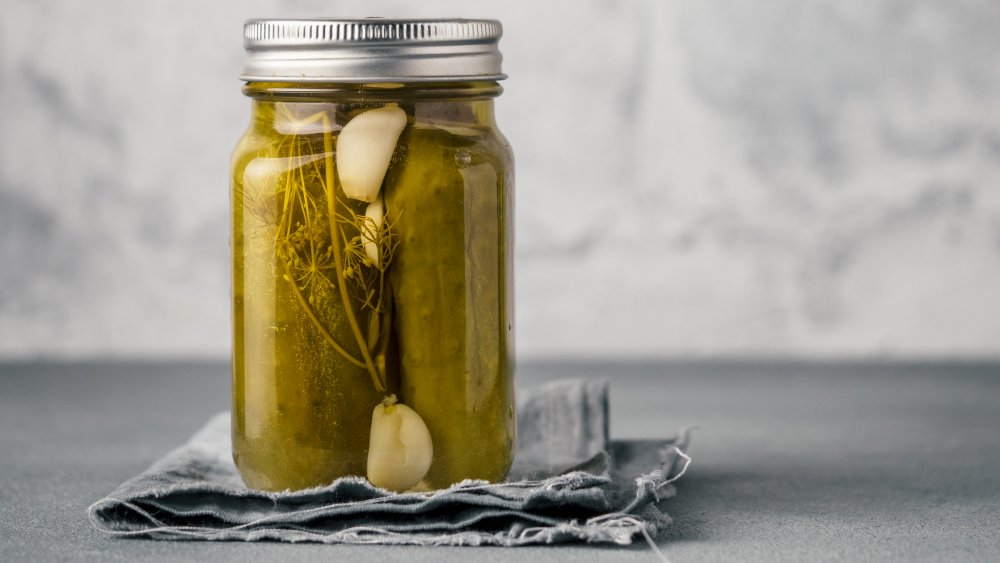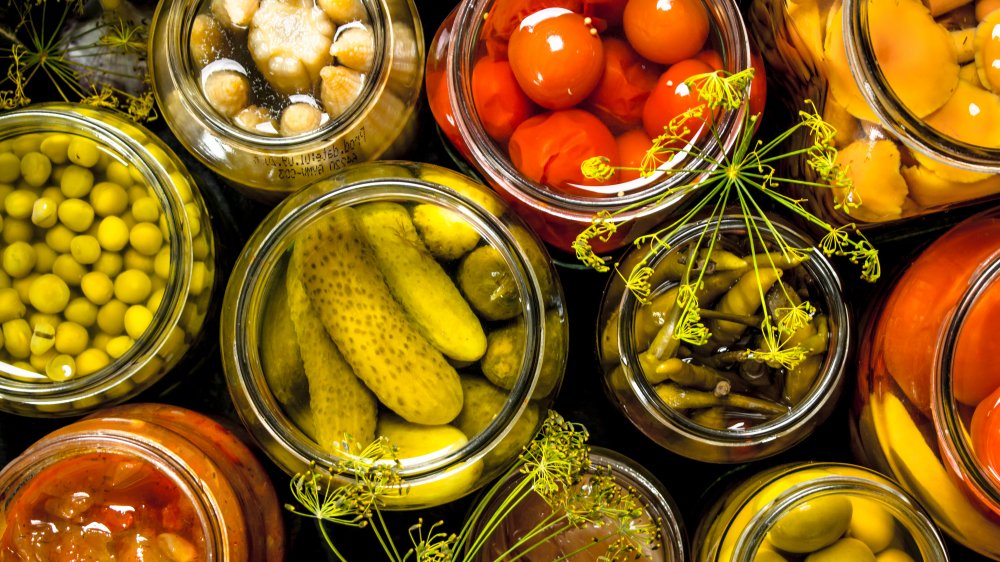Here's How You Can Make Pickles At Home
Pickling is a great way to use up any extra vegetables you have lying around that are about to go bad — or you simply have a lot of. The process is much easier than you would think, provided you have some empty jars and the self-control to wait a little while for your veggies to steep, so to speak. These tips are for refrigerator pickles (aka quick pickles,) but making shelf-stable pickles at home is possible, they just take longer and require more equipment. If you're ready to take that leap, check out Food In Jars for detailed advice and safety requirements.
Delish recommends starting with Persian or Kirby cucumbers, which stay crisp and are easily packed into jars. They suggest using white vinegar because it has a clean flavor, but note you can swap in any other vinegar your heart desires, (but avoid strong vinegar like red wine or balsamic, which will be overwhelming). For spices, they advise beginning with garlic and dill, and adding any others you enjoy, like whole peppercorns or mustard seeds. The best jars for this project are mason jars, but any jar with a tight lid (like an old pickle jar!) will work. Just make sure to give your jars a thorough wash before repurposing.
After assembling your pickles, they will need to chill for at least two hours to begin their transformation. If possible, wait a full 24 hours before digging in. These pickles should last up to a week in the fridge.
Think beyond the cucumber
While you might think of classic pickles as being made with cucumbers, you can actually pickle almost any vegetable! Bon Appetit offers up a few recommendations to help you create the best textures and combinations.
They suggest starting with naturally firm vegetables, as all foods become softer when you pickle them. Make sure to trim the stems and ends of your veggies as well, as they claim these contain enzymes that can lead to mushy pickles. The smaller you cut your veg, the quicker it will absorb the flavor of your brine, so keep that in mind when deciding on what size to chop.
Some out-of-the-ordinary combinations they endorse are carrot with fenugreek and fennel seeds, cauliflower with tarragon and coriander, and sweet corn with onion, jalapeno, and cilantro. The Kitchn agrees with the idea of branching out from cucumber pickles as well, suggesting pickled okra, green beans, and garlic scapes as great alternatives.

